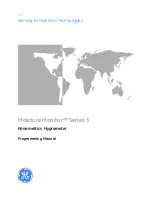
63
Laundry preparation
Don’t dry the following in your dryer:
- plasticized fabrics;
- chloro-fibres (eg. Termolactyl*)
* registered trademark;
- garments containing plastic foam, rubber
or reinforcements that might become
detached;
- bulky items (duvets, quilts, etc.);
- laundry that hasn’t been spun;
- laundry that’s been cleaned with inflam-
mable chemical products.
Normal
drying
Delicate
drying
Do not tumble dry
Check the state of your fabrics:
If, after washing and before putting the
laundry in the dryer, you notice stains, don’t
dry the stained items, because stains that
are then ironed or dried in a dryer usually
can’t be removed. Refer to the instructions
that most washing machine manuals give
on removal of difficult stains and, most
importantly, wash the items again.
How to prepare laundry items:
- close all zips and press studs;
- remove loose buttons, broaches, clips;
- do up belts, aprons strings, etc.;
- empty pockets.
Check labels on fabrics:
Loading the laundry
Approximate weights of laundry
types (grams):
Laundry type
Weight
Double sheet
1300
Bath robe
1250
Duvet cover
1100
Single sheet
700
Men’s pyjamas
500
Tablecloth
270
Pillowcase
250
Men’s underpants
250
Towel
220
Men’s shirt
200
Women’s nightdress
200
Napkin
120
Blouse
120
Men’s/women’s slip
100
Teacloth
100
Recommended volumes:
To reduce creasing and optimise drying times
we advise keeping within a maximum of 6
kg of cotton and 3 kg of synthetic/delicate
fibres.
- 6 kg of cotton corresponds to the volume
of a full drum (items uncompressed);
- 3 kg of synthetic/delicate fibres corre-
sponds to the volume of a half drum;
- 1,5 kg of synthetic/delicate fibres corre-
sponds to the volume of a quarter drum.
Before the first drying cycle, clean the inside
of the drum with a damp cloth to remove
any dust that may have deposited.
Putting the laundry into the drum:
- open the door by pulling the handle
outwards;
- check the filter is in its housing;
- put the washed and spun laundry into the
drum without compressing it;
- close the door.

































